Search results for "great scott gadgets"
-

Great Scott Gadgets Great Scott Gadgets GreatFET One Universal USB
GreatFET One is a hardware hacker’s best friend. With an extensible, open source design, two USB ports, and 100 expansion pins, GreatFET One is your essential gadget for hacking, making, and reverse engineering. By adding expansion boards called neighbors, you can turn GreatFET One into a USB peripheral that does almost anything.Whether you need an interface to an external chip, a logic analyzer, a debugger, or just a whole lot of pins to bit-bang, the versatile GreatFET One is the tool for you. Hi-Speed USB and a Python API allow GreatFET One to become your custom USB interface to the physical world.Features Serial protocols: SPI, I²C, UART, and JTAG Programmable digital I/O Analog I/O (ADC/DAC) Logic analysis Debugging Data acquisition Four LEDs Versatile USB functions High-throughput hardware-assisted streaming serial engine Downloads Documentation GitHub
€ 99,95
Members € 89,96
-
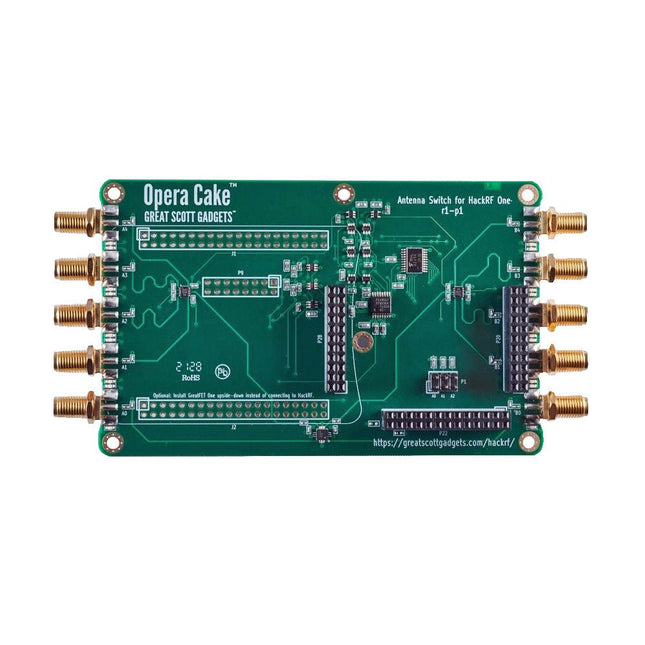
Great Scott Gadgets Great Scott Gadgets Opera Cake (Antenna Switch for HackRF One)
Opera Cake is an antenna switching add-on board for HackRF One that is configured with command-line software either manually, or for automated port switching based on frequency or time. It has two primary ports, each connected to any of eight secondary ports, and is optimized for use as a pair of 1x4 switches or as a single 1x8 switch. Its recommended frequency range is 1 MHz to 4 GHz. When HackRF One is used to transmit, Opera Cake can automatically route its output to the appropriate transmit antennas, as well as any external filters, amplifiers, etc. No changes are needed to the existing SDR software, but full control from the host is available. Opera Cake also enhances the HackRF One’s use as a spectrum analyzer across its entire operating frequency range of 1 MHz to 4 GHz. Antenna switching works with the existing hackrf_sweep feature, which can sweep the whole tuning range in less than a second. Automatic switching mid-sweep enables the use of multiple antennas when sweeping a wide frequency range. Downloads Documentation GitHub
€ 199,95€ 169,95
Members identical
-
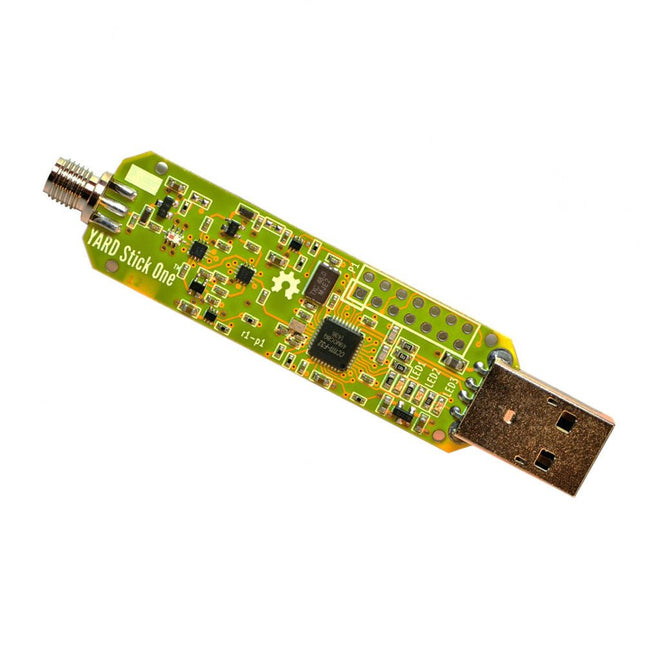
Great Scott Gadgets Great Scott Gadgets YARD Stick One – Sub-1 GHz Wireless Test Tool
YARD Stick One (Yet Another Radio Dongle) is a sub-1 GHz wireless transceiver IC on a USB dongle. It is based on the Texas Instruments CC1111. YARD Stick One can transmit or receive digital wireless signals at frequencies below 1 GHz. It uses the same radio circuit as the popular IM-Me. The radio functions that are possible by customizing IM-Me firmware are now at your fingertips when you attach YARD Stick One to a computer via USB. Features Half-duplex transmit and receive Official operating frequencies: 300-348 MHz, 391-464 MHz, and 782-928 MHz Unofficial operating frequencies: 281-361 MHz, 378-481 MHz, and 749-962 MHz Modulations: ASK, OOK, GFSK, 2-FSK, 4-FSK, MSK Data rates up to 500 kbps Full-Speed USB 2.0 SMA female antenna connector (50 ohms) Software-controlled antenna port power (max 50 mA at 3.3 V) Low pass filter for elimination of harmonics when operating in the 800 and 900 MHz bands GoodFET-compatible expansion and programming header GIMME-compatible programming test points Open source Downloads Documentation GitHub
€ 99,95
Members € 89,96
-
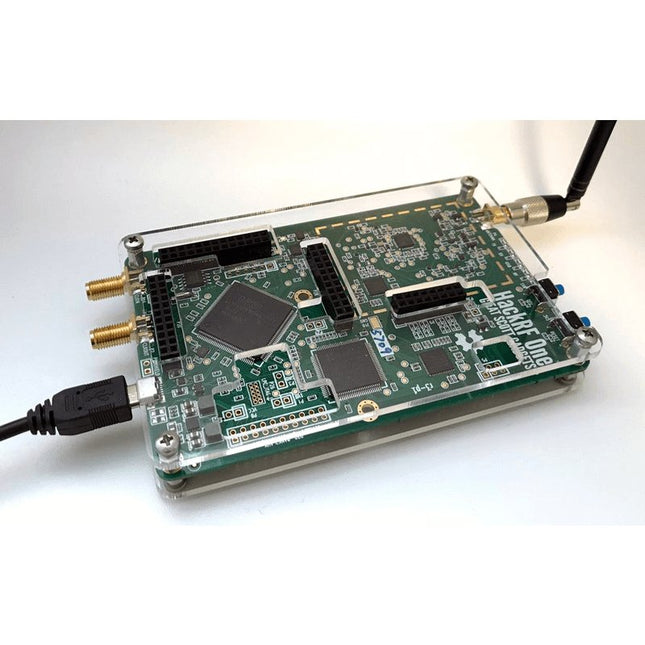
Great Scott Gadgets Acrylic Case for HackRF One SDR
This clear acrylic case is the official case for the HackRF One board. It can replace the standard black plastic case of the HackRF One. Assembly Instructions Use a guitar pick or spudger to extract the HackRF One circuit board from the black plastic case. Insert one long screw into each corner of the bottom acrylic panel. Secure each long screw with a short (5 mm) spacer on the opposite side of the panel. Place the HackRF One circuit board (facing up) on top of the bottom panel, fitting the ends of the long screws through the corner mounting holes of the circuit board. Secure the circuit board with one long (6 mm) spacer in each corner. Place the top acrylic panel on top of the circuit board, aligning the cutouts with the circuit board’s expansion headers. Secure each corner with a short screw. Note: Do not overtighten! Hand-tighten only at every step.
€ 19,95
Members € 17,96
-
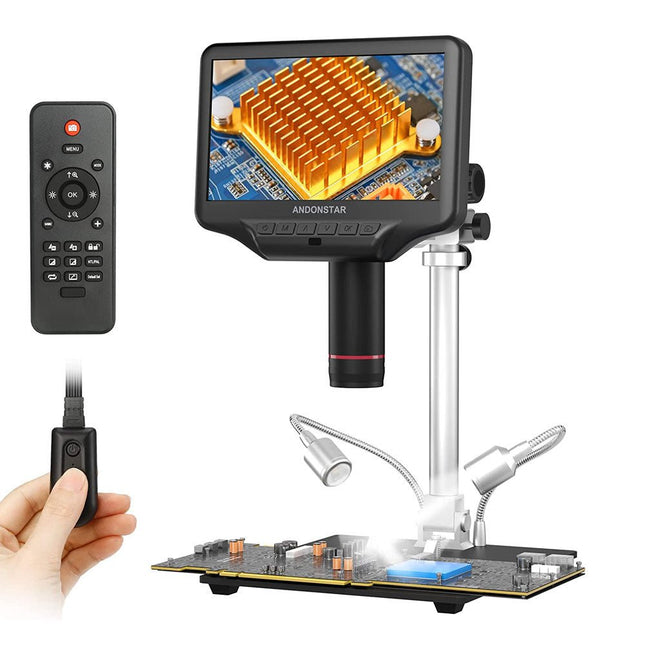
Andonstar Andonstar AD407 Pro 7" HDMI Digital Microscope
The Andonstar AD407 Pro microscope is suitable for various applications such as soldering SMDs or repair work. The microscope has a large adjustable 7" LCD display and comes with a remote. Compared to AD407, AD407 Pro offers an extra-high stand, which makes soldering of components even easier. Specifications Screen size 7 inch (17.8 cm) Image sensor 4 MP Video output UHD 2880x2160 (24fps)FHD 1920x1080 (60fps/30fps)HD 1280x720 (120fps) Video format MP4 Magnification Up to 270 times (27 inch HDMI monitor) Photo resolution Max. 12 MP (4032x3024) Photo format JPG Focus range Min. 5 cm Frame Rate Max. 120fps Video interface HDMI Storage microSD card (up to 64 GB) Power source 5 V DC Light source 2 LEDs with the stand Stand size 20 x 18 x 32 cm Included 1x Andonstar AD407 Pro Digital Microscope 1x Metal stand with 2 LEDs 1x UV filter (already assembled in the lens) 1x IR remote 1x Switch cable 1x Power adapter 1x Wrench 2x Metal clips 1x HDMI cable 1x Manual Downloads Manual Model Comparison AD407 AD407 Pro AD409 AD409 Pro-ES Screen size 7 inch (17.8 cm) 7 inch (17.8 cm) 10.1 inch (25.7 cm) 10.1 inch (25.7 cm) Image sensor 4 MP 4 MP 4 MP 4 MP Video output 2160p 2160p 2160p 2160p Interfaces HDMI HDMI USB, HDMI, WiFi USB, HDMI, WiFi Video format MP4 MP4 MP4 MP4 Magnification Up to 270x Up to 270x Up to 300x Up to 300x Photo resolution Max. 4032x3024 Max. 4032x3024 Max. 4032x3024 Max. 4032x3024 Photo format JPG JPG JPG JPG Focus distance Min. 5 cm Min. 5 cm Min. 5 cm Min. 5 cm Frame rate Max. 120f/s Max. 120f/s Max. 120f/s Max. 120f/s Storage microSD card microSD card microSD card microSD card PC support No No Windows Windows Mobile connection No No WiFi + Measurement WiFi + Measurement Power source 5 V DC 5 V DC 5 V DC 5 V DC Light source 2 LEDs with the stand 2 LEDs with the stand 2 LEDs with the stand 2 LEDs with the stand Endoscope No No No Yes Stand size 20 x 12 x 19 cm 20 x 18 x 32 cm 18 x 20 x 30 cm 18 x 20 x 32 cm Weight 1.6 kg 2.1 kg 2.2 kg 2.5 kg
€ 289,00€ 219,00
Members identical
-
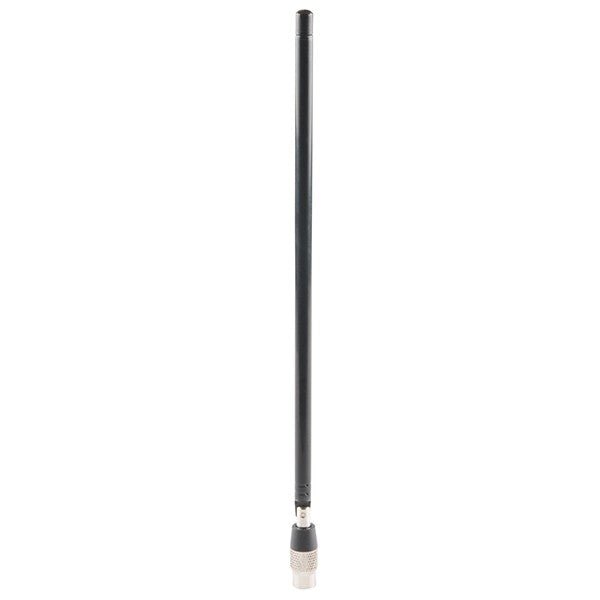
Great Scott Gadgets Great Scott Gadgets ANT500 Telescopic Antenna (75 MHz to 1 GHz)
ANT500 from Great Scott Gadgets is a telescopic antenna designed for operation from 75 MHz to 1 GHz. Its total length is configurable from 20 cm to 88 cm. ANT500 is constructed of stainless steel and features an SMA male connector, rotating shaft, and adjustable elbow. ANT500 is a 50 ohm general purpose antenna. It is the perfect first antenna for use with HackRF One.
-

Great Scott Gadgets Great Scott Gadgets Throwing Star LAN Tap Pro
The Throwing Star LAN Tap Pro is a passive Ethernet tap, requiring no power for operation. There are active methods of tapping Ethernet connections (e.g., a mirror port on a switch), but none can beat passive taps for portability. To the target network, the Throwing Star LAN Tap looks just like a section of cable, but the wires in the cable extend to the monitoring ports in addition to connecting one target port to the other.The monitoring ports (J3 and J4) are receive-only; they connect to the receive data lines on the monitoring station but do not connect to the station’s transmit lines. This makes it impossible for the monitoring station to accidentally transmit data packets onto the target network.The Throwing Star LAN Tap Pro is designed to monitor 10BASET and 100BASETX networks. It is not possible for an unpowered tap to perform monitoring of 1000BASET (Gigabit Ethernet) networks, so the Throwing Star LAN Tap intentionally degrades the quality of 1000BASET target networks, forcing them to negotiate a lower speed (typically 100BASETX) that can be passively monitored. This is the purpose of the two capacitors (C1 and C2).Like all passive LAN Taps, the Throwing Star LAN Tap Pro degrades signal quality to some extent. Except as described above for Gigabit networks, this rarely causes problems on the target network. In situations where very long cables are in use, the signal degradation could reduce network performance. It is a good practice to use cables that are not any longer than necessary.DownloadsOpen source design files
-
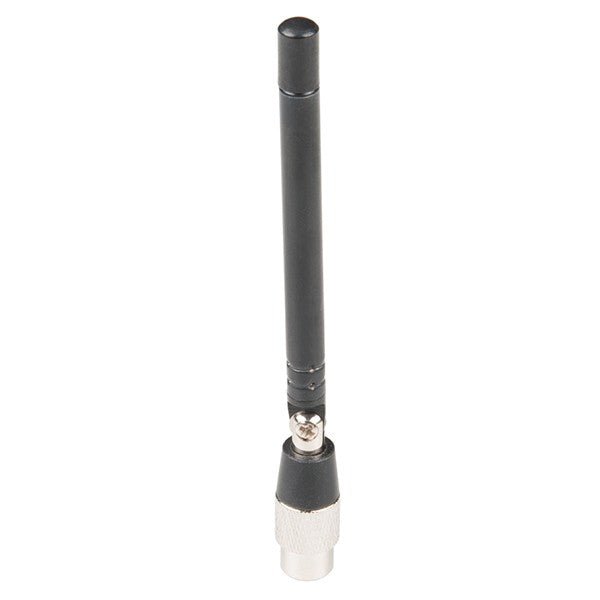
Great Scott Gadgets Great Scott Gadgets ANT700 Telescopic Antenna (300 MHz to 1100 MHz)
ANT700 from Great Scott Gadgets is a lightweight telescopic antenna designed for operation from 300 MHz to 1100 MHz. Its total length is configurable from 9.5 cm to 24.5 cm. ANT700 is constructed of stainless steel and features an SMA male connector, rotating shaft, and adjustable elbow. ANT700 is a 50 ohm general purpose antenna. It is a perfect first antenna for use with HackRF One.
-

Great Scott Gadgets Great Scott Gadgets HackRF One SDR (1 MHz to 6 GHz)
HackRF One is a Software Defined Radio (SDR) peripheral capable of transmission or reception of radio signals from 1 MHz to 6 GHz. Designed to enable test and development of modern and next generation radio technologies, HackRF One is an open source hardware platform that can be used as a USB peripheral or programmed for stand-alone operation. Specifications 1 MHz to 6 GHz operating frequency Half-duplex transceiver Up to 20 million samples per second 8-bit quadrature samples (8-bit I and 8-bit Q) Compatible with GNU Radio, SDR and more Software-configurable RX and TX gain and baseband filter Software-controlled antenna port power (50 mA at 3.3 V) SMA female antenna connector SMA female clock input and output for synchronization Convenient buttons for programming Internal pin headers for expansion Hi-Speed USB 2.0 USB-powered Open source hardware HackRF One is test equipment for RF systems. It has not been tested for compliance with regulations governing transmission of radio signals. You are responsible for using your HackRF One legally. Included 1x HackRF One SDR 1x Plastic enclosure 1x micro-USB cable Note: An antenna is not included. ANT500 is recommended as a starter antenna for HackRF One. Downloads Documentation GitHub Source code and hardware design files
-

Great Scott Gadgets Great Scott Gadgets Cynthion USB Analyzer
Multi-tool for Building, Analyzing, and Hacking USB Devices Cynthion is an all-in-one tool for building, testing, monitoring, and experimenting with USB devices. Built around a unique FPGA-based architecture, Cynthion’s digital hardware can be fully customized to suit the application at hand. As a result, it can act as a no-compromise High-Speed USB protocol analyzer, a USB research multi-tool, or a USB development platform. Out-of-the-box, Cynthion acts as a USB protocol analyzer capable of capturing and analyzing traffic between a host and any Low-, Full-, or High-Speed ("USB 2.0") USB device. It works seamlessly with the open-source analysis software Packetry. Combined with the LUNA gateware and Facedancer libraries, Cynthion becomes a versatile USB research and development tool. Facedancer makes it quick and easy to create or experiment with real USB devices—not just emulations—even if you don’t have experience with digital hardware design, HDL, or FPGA architecture! Features Cynthion is a fully reconfigurable test instrument that provides all the hardware, gateware, firmware, and software you need to work with—and, indeed, tob master-USB. Below are a few of the challenges to which you can apply your Cynthion: Protocol analysis for Low-, Full-, and High-speed USB: Cynthion provides everything you need for passive USB monitoring. With the Packetry USB analysis software, Cynthion provides everything you need for passive USB monitoring. Creating your own Low-, Full-, or High-speed USB device: LUNA provides Amaranth gateware that allows you to create USB devices in gateware, firmware, or a combination of the two. Using the Facedancer library, you can create or emulate real USB devices in high-level Python. Meddler-in-the-Middle (MitM) attacks on USB communication: Cynthion hardware can function as a "USB proxy" capable of transparently modifying USB data as it flows between a host and a device. Each board’s three USB-C connections allow for simultaneous, high-speed proxying while maintaining a high-speed connection to the host. As a result, you can proxy a connection with or without the help of a host PC. USB reverse engineering and security research: Cynthion hardware and LUNA gateware represent a purpose-built backend for research tools like Facedancer and USB-fuzzing libraries, thereby simplifying the emulation and rapid prototyping of compliant and non-compliant USB devices. Unlike other USB-emulation solutions, Cynthion-based hardware is dynamically reconfigurable, so it gives you the flexibility to create any endpoint configuration and engage in almost any USB (mis)behavior. Specifications A Lattice Semiconductor LFE5U-12F ECP5 FPGA supported by the yosys+nextpnr open-source FPGA flow Three High-Speed USB interfaces, each connected to a USB3343 PHY capable of operating at up to 480 Mbps. Two USB-C connectors for device-mode communication (left side) One USB-C connector for host-mode communication, device-mode communication, or USB analysis (right-side) One USB-A connector for host-mode communication or USB analysis (right-side, shared with USB-C connector) A Microchip SAMD11 debug controller allows user configuration of the FPGA and provides a number of diagnostic interfaces. A complete, user-programmable JTAG controller capable of configuring the FPGA and communicating via JTAG with user designs A built-in USB-to-serial communications bridge for FPGA debug I/O A variety of simple, built-in debug mechanisms, including utilities that allow you to create simple, PC-accessible register interfaces Three USB power switches allow you to control power to and from the right-side USB connectors, thereby facilitating controlled power cycling of USB-powered devices under analysis. 64 Mbit (8 MiB) RAM for buffering USB traffic or for user applications Two Digilent Pmod Compatible I/O connectors presenting 16 high-speed FPGA user IOs that support user FPGA applications 32 Mbit (4 MiB) SPI-connected flash for PC-less FPGA configuration Six FPGA-connected user LEDs and five microcontroller-managed status LEDs A PAC1954 4-channel I²C power monitor IC, to measure VBUS voltages and currents on all four Cynthion USB ports. Two FUSB302B I²C USB-C port controllers, for the AUX and TARGET-C ports, to support USB Power Delivery or custom USB-C behaviour. Downloads Documentation Hardware Design Files Schematic, Diagrams & Software









